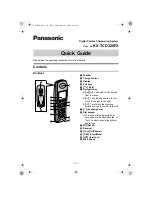
2:11
Utility stitches and pr
actical sewing
Hemming with the twin needle
Use the twin needle to make beatiful
topstitch seams.
Using the twin needle you can add a
professional touch to hems on stretch
fabrics such as T-shirts, knitted articles or
cycling shorts both quickly and easily.
Twin needles are available in different
widths. The traditional width for
topstitching is 4 mm. To prevent the
needle from striking the needle plate, you
must make sure that you select the center
needle position .
• First fold and iron the width of fabric
desired for the hem.
• Then topstitch the hem from the right
side.
• Finally, cut the protruding hem edge
back to the seam.
Use only a stretch needle when sewing
stretch fabric!
Tip:
On dif
fi
cult fabrics such as ribbed knit-
wear it is advisable to baste the hem before
topstitching it.
On page 1:11 you will
fi
nd a description
of how to thread the twin needle.
stitch
G
G
G
0
0
0
3
3
3
3-5
3-5
3-5
0/1
0/1
0/1
Summary of Contents for selectline
Page 4: ......
Page 6: ...IV IV Introduction ...
Page 11: ...1 Operate your Pfaff select ...
Page 29: ...2 Utility stitches and practical sewing ...
Page 44: ......
Page 45: ...3 Maintenance and trouble shooting ...
Page 50: ......














































